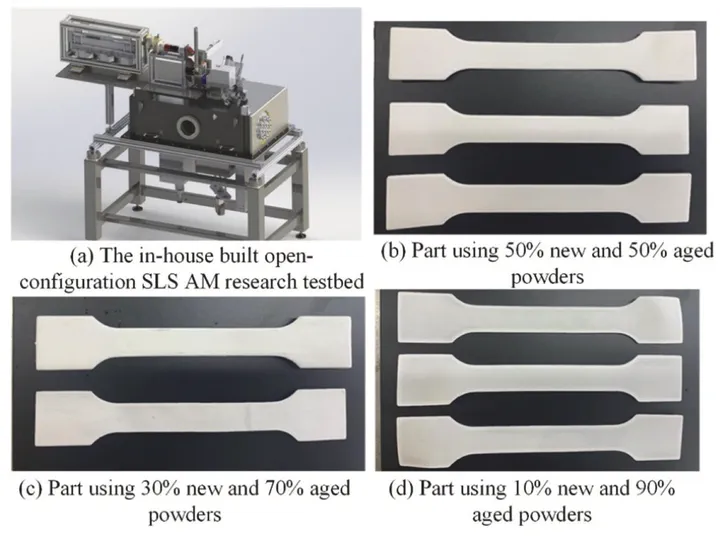A Combined Theoretical and Experimental Approach to Model Polyamide 12 Degradation in Selective Laser Sintering Additive Manufacturing

Abstract
Selective laser sintering (SLS) generates complex high-performance parts from micrometer-diameter powders. In polyamide 12 SLS, a considerable amount of expensive polyamide 12 materials remains un-joined in the additive manufacturing (AM) process. Such materials, particularly the ones near the heat-affected zones (HAZ), go through irreversible chemical degradations originated from thermal oxidations. Despite efforts in understanding the degradation mechanisms of the materials, full modelling of the complex material degradation remains not well understood. In this work, through a combined theoretical and experimental approach, we propose a firstinstance kinetic model considering the effects of both oxygen and laser to model the material degradation in polyamide 12 SLS. By mapping the actual material degradation rates into the oxidation physics and data-driven parameter identification, we obtain the coefficients of the actual coupled oxygen and laser effects. Through sensitivity analysis, we derive the fitting equations between the sample degradation rates and the oxidation time. The proposed kinetic model can predict the oxidation rates of pure or mixed materials using two easily available parameters: materials density and oxidation time. We show that the laser effects are 4-time stronger than oxygen effects on polyamide 12 degradation. The predicted oxidation matches on average 89.53 percent with the actual SLS degradation rates, in contrast to a 34.48 percent accuracy from a basic autoxidation model. Besides, the paper identifies how coupling of oxygen, laser irradiation, and preheating impacts the rate of material degradation.
Type
Publication
Journal of Manufacturing Processes